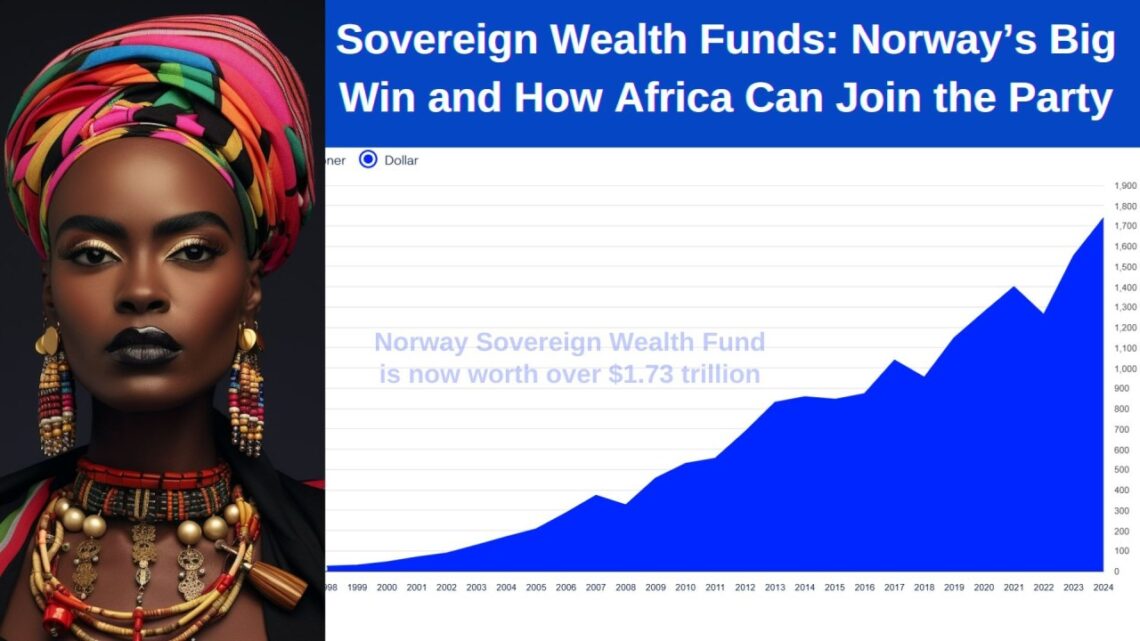
Hey, What’s a Sovereign Wealth Fund Anyway?
A sovereign wealth fund (SWF) is a state-owned investment vehicle designed to manage a country’s surplus wealth, typically derived from commodity exports, foreign exchange reserves, or fiscal surpluses. These funds aim to preserve wealth for future generations, stabilize economies during volatile periods, and generate long-term returns. Today, SWFs collectively manage trillions of dollars globally, with notable examples including funds in the Middle East, Asia, and Norway. For resource-rich African nations, SWFs present an opportunity to transform finite resources into sustainable economic growth—if approached strategically.
The Norwegian Model: A Global Benchmark
Norway’s Government Pension Fund Global, often referred to as the Norway Sovereign Wealth Fund, is widely regarded as a gold standard for SWF management. Established in 1990, the fund was created to invest surplus revenues from Norway’s oil and gas sector. As of early 2025, it holds over $1.73 trillion in assets, making it one of the largest SWFs in the world.
What sets Norway’s fund apart is its transparency, governance, and long-term vision. Key features include:
- Clear Mandate: The fund’s primary goal is to ensure that oil wealth benefits future generations. It avoids short-term domestic spending, focusing instead on global investments in stocks, bonds, and real estate.
- Robust Governance: Managed by Norges Bank Investment Management (NBIM) under strict oversight from the Ministry of Finance, the fund adheres to ethical investment guidelines and publishes detailed annual reports.
- Diversification: With investments in over 9,000 companies across 70 countries, the fund mitigates risks tied to oil price volatility.
- Fiscal Discipline: Norway follows a fiscal rule limiting annual withdrawals to 3% of the fund’s value, ensuring sustainability.
The result? Norway has turned a depleting resource into a perpetual asset, providing economic stability and a safety net for its 5.4 million citizens.
Africa’s Resource Wealth and the SWF Opportunity
Africa is home to vast natural resources—oil in Nigeria and Angola, gold in South Africa, copper in Zambia, and diamonds in Botswana, to name a few. Yet, many African nations struggle with the “resource curse,” where commodity wealth leads to corruption, inequality, and economic instability rather than prosperity. Sovereign wealth funds could be a game-changer, but only a handful of African countries, such as Botswana and Ghana, have taken meaningful steps in this direction.
Botswana’s Pula Fund, established in 1994, offers a modest success story. Funded by diamond revenues, it has helped stabilize the economy and save for future needs. However, its scale (approximately $6 billion) pales in comparison to Norway’s, and many other African nations lack any SWF at all. So, how can African countries approach this model effectively?
A Roadmap for African Sovereign Wealth Funds
African nations can draw inspiration from Norway while tailoring strategies to their unique contexts. Here’s a proposed roadmap:
- Establish a Clear Purpose. African SWFs should define their goals—whether intergenerational savings (like Norway), economic stabilization, or infrastructure investment. For example, Nigeria could prioritize stabilization given its oil price volatility, while a mineral-rich country like the Democratic Republic of Congo might focus on long-term wealth preservation.
- Secure Political Will and Governance. Corruption and mismanagement often undermine African resource wealth. Strong, independent institutions—modeled after Norway’s NBIM—must oversee SWFs. Transparency, regular audits, and public disclosure of investments can build trust and deter misuse of funds.
- Start Small, Scale Gradually. Not every country can launch a trillion-dollar fund. Ghana’s Petroleum Revenue Management Act (2011) created the Ghana Heritage Fund with modest oil revenues, proving that incremental steps work. African nations should allocate a fixed percentage of commodity income annually to seed their funds.
- Diversify Investments. Relying solely on resource exports is a recipe for failure. African SWFs should invest globally, as Norway does, while also considering regional opportunities like renewable energy or agriculture to support local development.
- Leverage Partnerships. African countries can collaborate with international financial institutions or learn from peers like Norway and Singapore. Technical assistance in fund design, investment strategy, and risk management could accelerate progress.
- Engage Citizens.Public buy-in is critical. Norway’s success partly stems from its citizens’ understanding of the fund’s purpose. African governments must educate their populations, ensuring SWFs are seen as national assets, not elite slush funds.
Challenges and Considerations
Implementing SWFs in Africa isn’t without hurdles. Weak institutions, political instability, and debt burdens could derail efforts. For instance, Angola’s SWF, launched in 2012 with $5 billion, has faced allegations of mismanagement tied to past regimes. Additionally, many African nations lack the fiscal surplus Norway had at its SWF’s inception, requiring creative funding mechanisms like public-private partnerships or diaspora bonds.
Conclusion
Norway’s shown us that resource cash doesn’t have to vanish into thin air—it can grow into something epic. For Africa, SWFs are a chance to ditch the curse and build a future we can all cheer for. It’s about starting smart, staying honest, and thinking long-term. So, let’s grab a shovel and plant those money trees—before the oil dries up or the mines go quiet. The question is, will we take action today or wait until the wealth is gone? Share your thoughts, spread the word, and let’s push for a smarter future together!